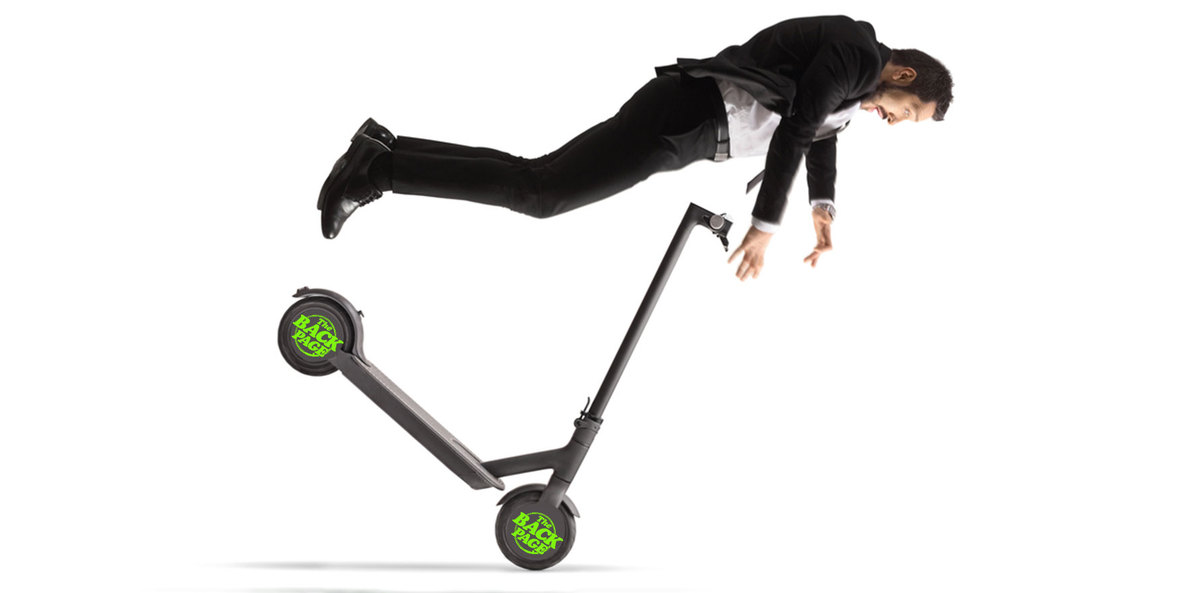Electric bikes and scooters may be on trend, but they come with a falling-downside.
Call me an unreconstructed baby boomer if you wish, but your Back Page scribbler is not a big fan of e-bikes and e-scooters.
It could be that we have been unreasonably swayed by the recent near-death experience of being side-swiped by a helmetless pre-teen travelling at high velocity along a busy suburban footpath on an e-bike the size of a small Harley-Davison.
Apart from the bruised thigh and dangerously racing heartbeat, your correspondent was provoked into making Grandpa Simpson-style gesticulations, followed by incoherent rantings, as the juvenile offender soared off into the distance like a road warrior from Furiosa.
So it is perhaps unsurprising that we have taken some interest in new research out of the US which looks at injury rates related to e-bikes and e-scooters and compares those with injuries resulting from using the human-powered vehicles.
Publishing in JAMA Network Open this week, boffins from the University of California examined data from nearly 90,000 injuries sustained by bike and scooter riders from the start of 2017 to the end of 2022.
While the findings are based on US data only and cannot necessarily be correlated to Australian circumstances, they are quite interesting nonetheless and do point to likely outcomes associated with the rapidly increasing popularity of these vehicles, particularly in urban environments.
Nobody wins a prize for guessing that the number of injuries and hospitalisations as the result of e-scooter and e-bike usage rose significantly over the five-year study period, thanks to their growing popularity and the proliferation of vehicle-share businesses.
More specifically, e-bike injuries increased by nearly 100% and e-scooter injuries by more 45% annually, while injury rates for those using conventionally powered bikes and scooters remained stable.
What is more interesting is the demographic breakdown of those injured using these vehicles.
As a group, those injured from EV accidents were significantly older than those injured from conventional vehicles, at 31 years versus 27 years, and across all injured riders, the median age rose from 23 to 32.
For human-powered bike riders, the median age of those injured riders was 30, compared with 39 years for e-bicyclists, while scooter riders had a median age of 11 at the time of injury versus 30 for e-scooter riders.
In addition, injured EV riders were more likely to participate in risky behaviours, such as intoxicated and helmetless riding, than conventional vehicle users, the study authors said.
The soaring injury rate reflected in these findings creates an interesting public policy challenge, because the benefits of e-bikes and e-scooter use in terms of environmental impact is also important, as are the health benefits accrued, especially for older riders taking advantage of these technologies.
The authors go on to suggest campaigns to encourage helmet wearing and safer riding habits might be useful, while more tangible actions such as improving urban infrastructures for bike and scooter riding and greater enforcing of speed limits are also called for.
We’re not going to hold our breath. It’s hardly the first time that the adoption of new technologies has far outstripped our policy and regulatory responses to their negative impacts.
In the meantime, we pedestrians shall have to remain increasingly vigilant and primed to take swift evasive action in the face of the e-scooter onslaught.
Send old-fashioned pedal-powered story tips to penny@medicalrepublic.com.au.


